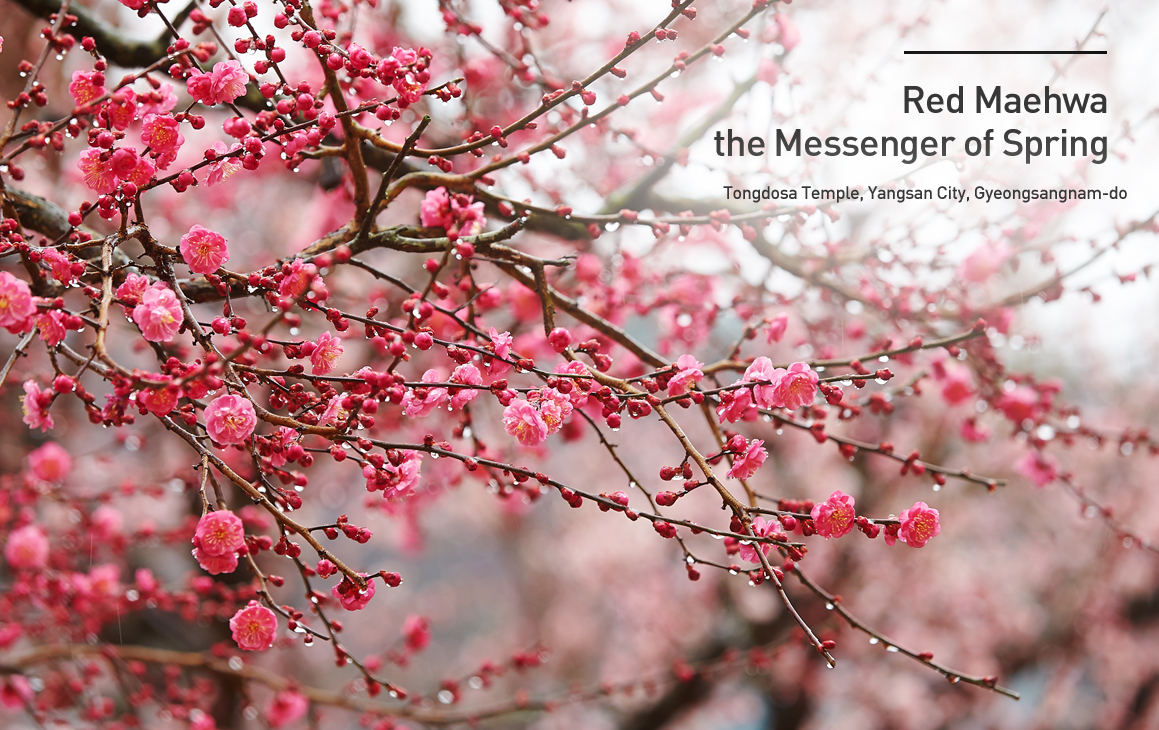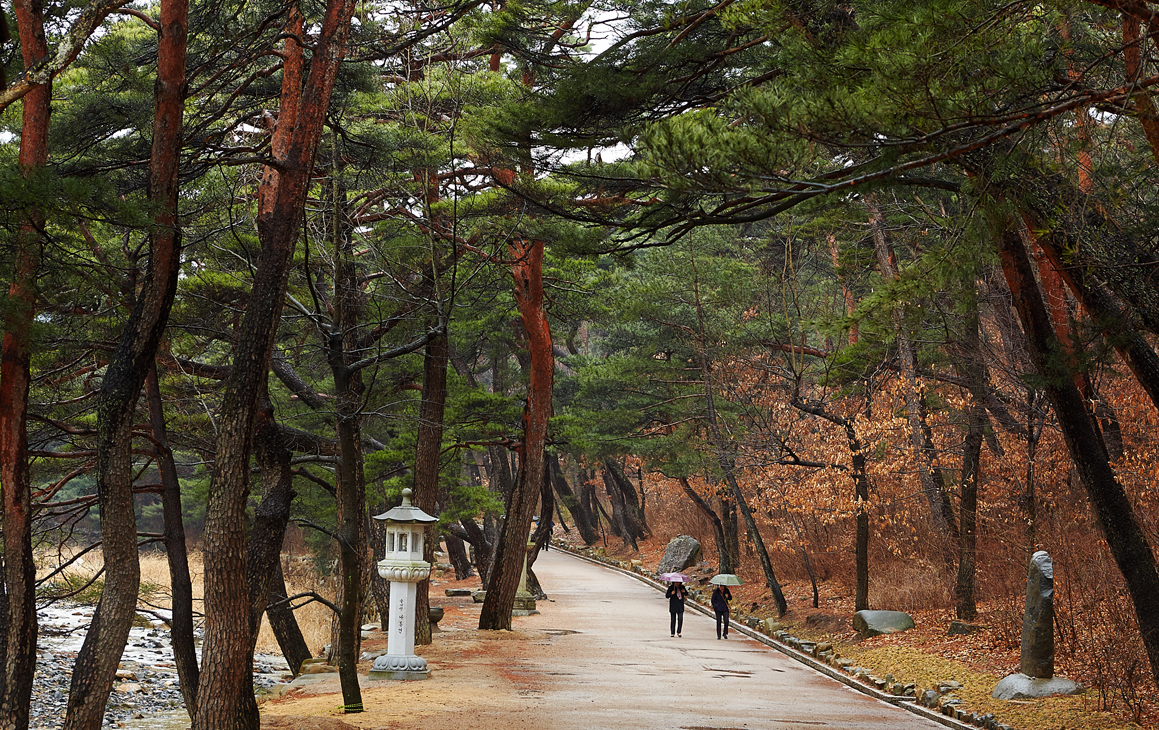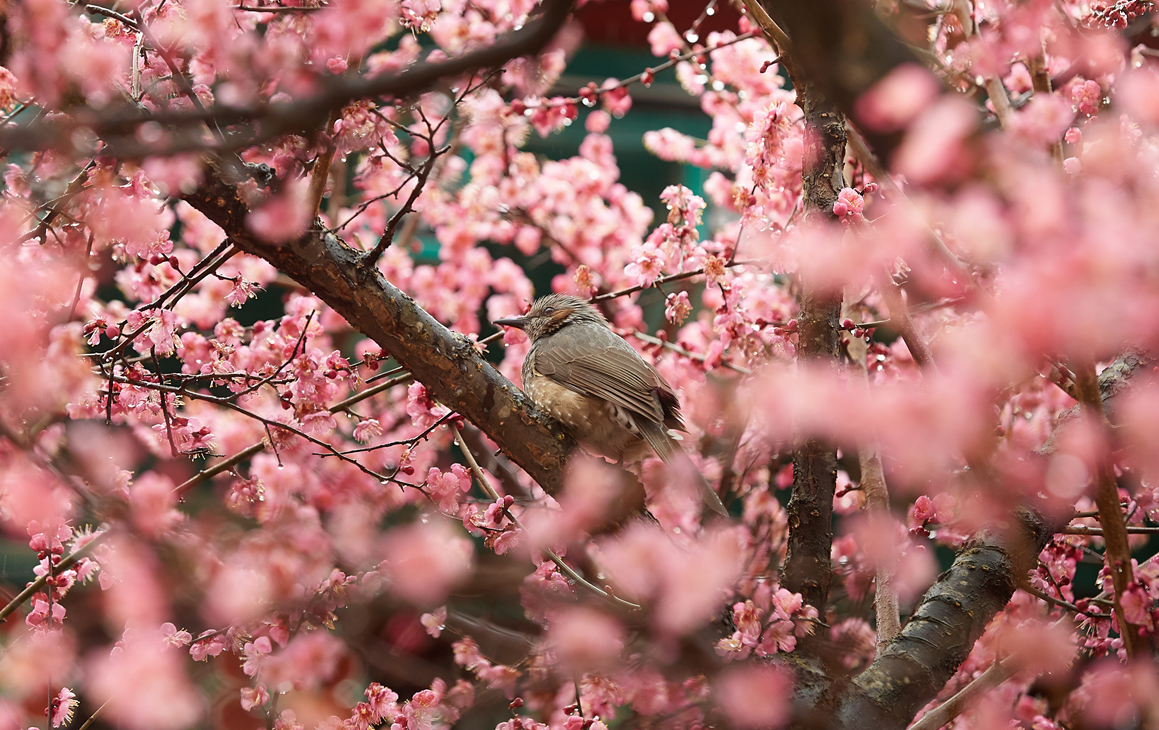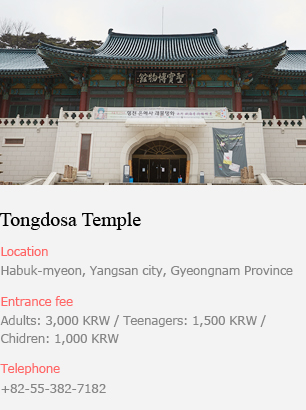

Weathering the harsh cold throughout the long winter,
maehwa flowers are starting to blossom, signaling the arrival of springtime and revival of life.
Beloved by classical scholars, maehwa represent strength, fidelity,
and nobility and are often described as a symbol of integrity.
In particular, red maehwa around Tondongsa Temple are among the first flowers to bloom in Korea,
serving as a benchmark for the arrival of springtime.
This graceful temple beckons us for a walk on a rainy day.
Time-Honored Historic Buddhist Temple
Located in the southeastern part of Gyeongsangnam-do, Yangsan has three famous mountains—Yeongchuk,
Cheonseong, and Cheontae—among which Tongdosa Temple sits on Mt. Yeongchuk with refined dignity.
It was built by Precept Master Jajang in 646 under the regime of Queen Seondeok of the Silla Kingdom
on Mt. Yeongchuk, which is said to resemble the mountain in India where the Buddha taught his followers.”
From the entrance of Tongdosa, a number of pine trees block the sky,
creating a green tunnel connecting the secular world and the enchanted land.
Into the thick forest, the wind blows calmly through the cold pine trees.

Between Winter and Spring
The end of the pine tree path leads to the first gate of the temple.
Passing through the Iljumun Gate, visitors are welcomed by four different guardian kings facing one another:
East King with a sword, West King holding a pagoda, South King chasing a dragon, and North King playing the lute.
The path decorated with lotus lanterns then leads to Cheonwangmun Gate
(Gate for Heavenly Kings) and Geungnakdaejeon (Grand Hall of Paradise).
It is said that the Silla kings dreamed of making their land a world of everlasting ultimate enlightenment.
The mural in the Grand Hall of Paradise provides a glimpse into the ancestors’ dreams.
The sea calms the minds of viewers and the boat in the mural heads toward the Elysium passing through wild waters.
On the dragon head at the front is a Buddhist saint holding hands to guide the boat,
and the saint on the rear dragon tail takes care of the people on board.
Sadly, because this mural was drawn onto the mud-plastered walls with natural dyes,
a fracture of the mural disappears whenever a grain of earth falls off.

The proper name of red maehwa at Tongdosa is “jajangmae (jajang maehwa)”
after the name of Precept Master Jajang, who built the temple.
The petals wet by raindrops look as though they belong to a watercolor.
Upon the onset of spring, a flock of photographers visits the temple to capture the beautiful landscape,
and sometimes painters bring large easels to sketch jajangmae.

National Treasure No. 290
After enjoying the red maehwa flowers, the next journey is toward Daeungjeon, the Main Buddha Hall.
This building and Geumganggyedan (Diamond Precept Platform) are the heart of the buildings remaining within the premises of Tongdosa today.
Since the Main Buddha Hall enshrines the remains of Buddha, the building does not have any statues of the Buddha.
Instead, a pagoda is standing beyond the sanctuary.

There is a legend about the foundation of Tongdosa Temple and the pond next to the main building.
According to the story, the temple was originally a large pond where nine dragons lived,
and one day Precept Master Jajang asked the dragons to leave the pond so that he could build a temple.
When the dragons refused to budge, the master used his power and made the pond boil furiously.
The five dragons fled to the southwest and fell dead, and three dragons flew to the east, perishing when they crashed into a rock.
The last dragon said it could not flee due to blindness and promised that it would protect the temple if it could stay in the pond.
Jajang agreed and made a small pond for the dragon.
Next to the pond stands a pavilion that has no relation with Buddhism, but has been used by ancestors to worship mountain gods.
However, since the pavilion is a sacred place, it was decided to let it stand outside the temple’s premises,
testifying to the willingness in Buddhist culture to accept, and coexist with, other faiths.

Red Maehwa after Enduring the Coldest Season
Yi Hwang, A prominent Korean Confucian scholar of the Choseon Dynasty,
loved red maehwa so much that he wrote more than 100 poems related to the flower.
As it now reveals its presence and value after enduring the harsh winter, the red maehwa is truly the messenger of spring.















